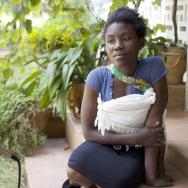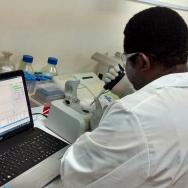Despite global health gains, child mortality remains prevalent across much of the world. But just how often do mothers suffer this devastating loss?
University of Chicago and University of Southern California sociologists have proposed a way to estimate how the death of a child impacts mothers in sub-Saharan Africa. Their new study found that, in some countries, more than half of women have lost a child.
In contrast to traditional measures of infant and child mortality, the study captures the cumulative impact of child loss through a mother’s lifetime.
“The magnitude of the numbers we found is stark,” said study co-author Jenny Trinitapoli of the University of Chicago, a leading social demographer of sub-Saharan Africa. “These questions have not been asked or explored enough in this part of the world. There isn’t just an inequality in the mortality burden, but also an inequality in the knowledge base.”
Published in the Proceedings of the National Academy of Sciences, the first-of-its-kind study uses two decades of data from 20 countries in sub-Saharan Africa. The researchers found that more than half of 45- to 49-year-old mothers have experienced the death of a child under age five. Nearly two-thirds have experienced the death of any child, irrespective of age.
“In the shadows of very high child mortality rates that the global health community typically focuses on, are all these grieving parents that never receive any attention,” said lead author Emily Smith-Greenaway, assistant professor of sociology at the USC Dornsife College of Letters, Arts and Sciences. “These results increase our recognition of bereavement as itself a public health threat—one that’s unfairly concentrated in low-income regions of the world.”
Long-term trauma
Their study grew out of the idea that parents everywhere suffer immensely when they outlive their children. While other researchers have examined the effects of child loss on parents in the United States and Europe, very few have quantified the loss felt by mothers in Africa.
“These are factors that we need to consider very carefully as we think about the consequences of stress, of aging,” said Trinitapoli, an associate professor of sociology at UChicago. “Looking at child loss from the perspective of mothers gives us ideas about where interventions might be the most useful, both for improving child health and helping women.”
According to the World Health Organization, from 1990 to 2018, the global infant mortality rate decreased from an estimated 65 deaths per 1,000 live births to 29 deaths per 1,000 live births. During that same span, annual infant deaths declined from 8.7 million to 4 million. Sub-Saharan African countries have experienced some of the swiftest reductions—progress that is rightfully celebrated, the study authors said.
But the intensive focus on child mortality rates also obscures the long-term trauma of child loss, especially for mothers who lose multiple children. High rates of childhood, adolescent, and young-adult mortality mean that mothers continue to experience bereavement over time.
“This study tells us the burden of bereavement is much greater than we knew and offers a new perspective on global inequality,” Smith-Greenaway said. “These new indicators can be used to improve current understandings of mortality change, bereavement as a public health threat, and population dynamics.”
While research on bereavement in developing countries is sparse, studies in high-income settings demonstrate that the death of a family member is an underappreciated source of social inequality. Those studies have found that bereaved parents are at higher risk of psychological problems, deteriorating health and relationship strain.
A new method
Using Demographic and Health Survey data funded by the U.S. Agency for International Development, the study authors calculated the prevalence for three categories: death of an infant, death of a child under five, and the loss of any child for mothers in multiple age groups. All three different metrics point to a much higher burden of loss than the story told by child mortality rates.
Trinitapoli and Smith-Greenaway also point to research on the negativity bias: Survival of children in one’s social network is a forgettable event, whereas a child’s death registers as memorable and influential—and can live on in the collective memory for decades.
“As a demographer, I’m interested in tapping into a collective consciousness,” Smith-Greenaway said.“These premature deaths live on in the collective memory in such a way that could shape ideas about parenthood, loss, and risk of tomorrow's generation of mothers.
“We have no reason to believe that the effects of these losses on mothers—the grief, sadness, disappointment—fades with time.”
Although the study focuses on sub-Saharan Africa, the authors say these indicators can be used to measure and consider the bereavement burden anywhere with high child mortality. They anticipate these numbers would be just as high in many other low-income settings.
By using existing data sources, Smith-Greenaway and Trinitapoli have also laid out a method for other researchers to do similar work—in Africa or elsewhere.
“What we have advanced here is the simplest possible good estimate,” Trinitapoli said. “This type of measure can be generated using existing, high-quality data sources. It doesn’t add an additional burden to the national statistics offices collecting the data.”
Citation: “Maternal cumulative prevalence measures of child mortality show heavy burden in sub-Saharan Africa,” Smith-Greenaway and Trinitapoli, Proceedings of the National Academy of Sciences, Feb. 10, 2020. DOI: 10.1073/pnas.1907343117
—This story was adapted from a University of Southern California press release.

